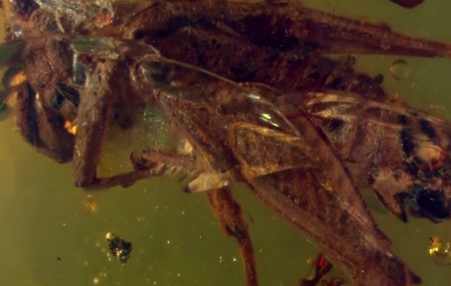A 20 million-year-old grasshopper the size of a rose thorn has been named after Sir David Attenborough.
Electrotettix attenboroughi was found in the Dominican Republic encased in amber 50 years ago and has now been identified as a new species.
“Grasshoppers are very rare in amber and this specimen is extraordinarily well-preserved,” said Sam Heads, a paleontologist at the Illinois Natural History Survey, a division of the Prairie Research Institute at the University of Illinois.
The specimen was found in over 160 pounds of Dominican amber collected by former INHS entomologist Milton Sanderson in the 1950s. Since most of the amber was clouded with oxidation the process of screening it was extremely difficult. Each “window” must be carefully cut and polished. Heads named the specimen Electrotettix attenboroughi, after Sir David Attenborough, a British filmmaker and naturalist.
“Sir David has a personal interest in amber, and also he was one of my childhood heroes and still is one of my heroes and so I decided to name the species in his honor — with his permission of course,” Heads said.
The pygmy locust was found in an amber sample also containing “wasps, ants, midges, plant remnants and fungi.”
“Fossil insects can provide lots of insight into the evolution of specific traits and behaviors, and they also tell us about the history of the time period,” Heads said. “They’re a tremendous resource for understanding the ancient world, ancient ecosystems and the ancient climate – better even, perhaps, than dinosaur bones.”
Agencies/Canadajournal
 Canada Journal – News of the World Articles and videos to bring you the biggest Canadian news stories from across the country every day
Canada Journal – News of the World Articles and videos to bring you the biggest Canadian news stories from across the country every day



